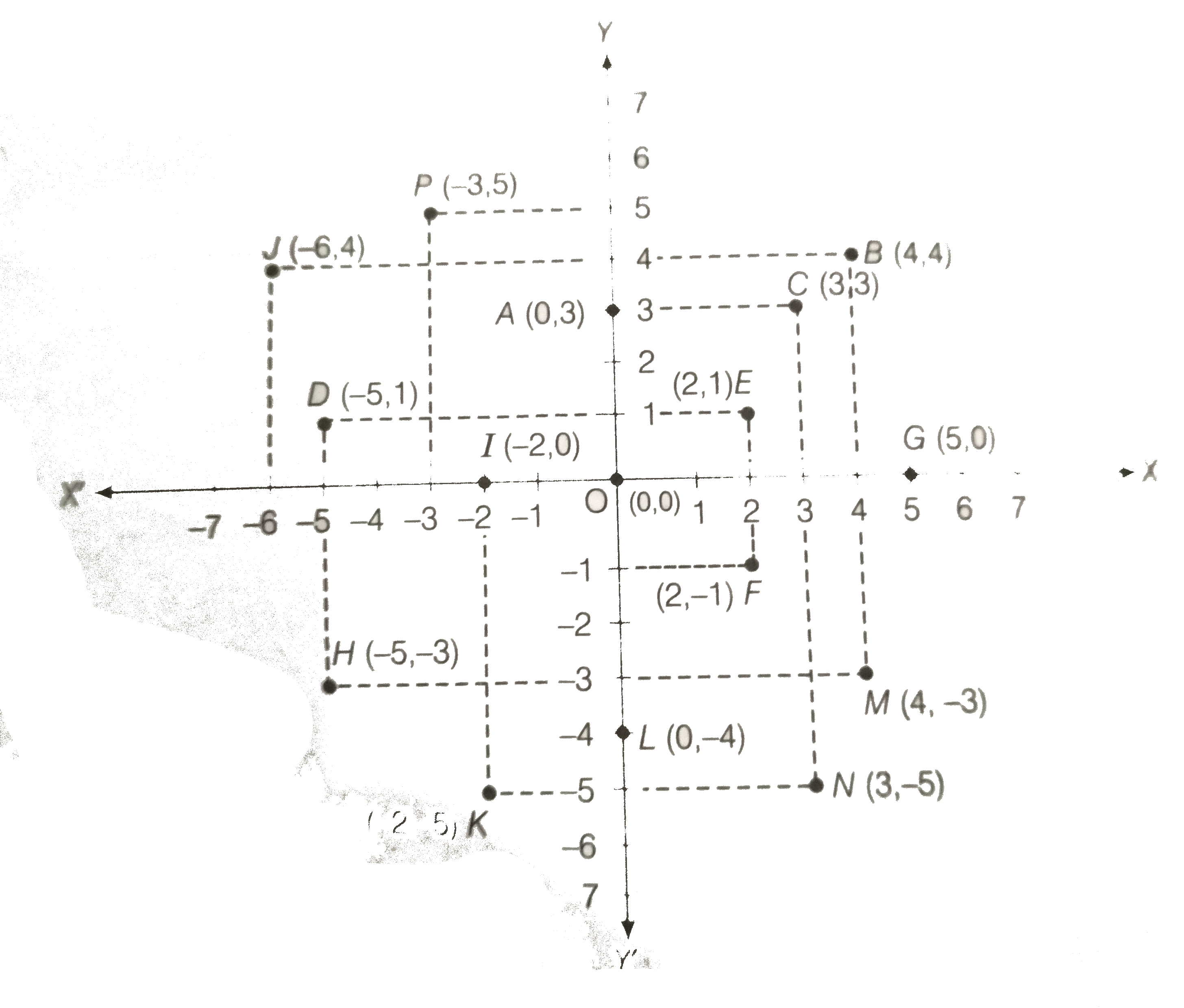The point whose abscissa and ordinate have different signs will lie in
I and II quadrants
I and III quadrants
II and III quadrants
II and IV quadrant
The correct Answer is:D
To determine in which quadrant a point lies when its abscissa (x-coordinate) and ordinate (y-coordinate) have different signs, we can follow these steps:
1. Understanding Quadrants:
- The Cartesian plane is divided into four quadrants:
- 1st Quadrant: Both x and y are positive (x > 0, y > 0).
- 2nd Quadrant: x is negative and y is positive (x < 0, y > 0).
- 3rd Quadrant: Both x and y are negative (x < 0, y < 0).
- 4th Quadrant: x is positive and y is negative (x > 0, y < 0).
2. Identifying Different Signs:
- We need to find points where the signs of the abscissa and ordinate are different. This means one must be positive and the other must be negative.
3. Analyzing Each Quadrant:
- 1st Quadrant: Both coordinates are positive (not applicable).
- 2nd Quadrant: x is negative and y is positive (different signs).
- 3rd Quadrant: Both coordinates are negative (not applicable).
- 4th Quadrant: x is positive and y is negative (different signs).
4. Conclusion:
- The points with different signs for abscissa and ordinate will lie in the 2nd Quadrant (x < 0, y > 0) and the 4th Quadrant (x > 0, y < 0).
Final Answer:
The point whose abscissa and ordinate have different signs will lie in the 2nd and 4th Quadrants.
---
- The Cartesian plane is divided into four quadrants:
- 1st Quadrant: Both x and y are positive (x > 0, y > 0).
- 2nd Quadrant: x is negative and y is positive (x < 0, y > 0).
- 3rd Quadrant: Both x and y are negative (x < 0, y < 0).
- 4th Quadrant: x is positive and y is negative (x > 0, y < 0).
- We need to find points where the signs of the abscissa and ordinate are different. This means one must be positive and the other must be negative.
- 1st Quadrant: Both coordinates are positive (not applicable).
- 2nd Quadrant: x is negative and y is positive (different signs).
- 3rd Quadrant: Both coordinates are negative (not applicable).
- 4th Quadrant: x is positive and y is negative (different signs).
- The points with different signs for abscissa and ordinate will lie in the 2nd Quadrant (x < 0, y > 0) and the 4th Quadrant (x > 0, y < 0).
The point whose abscissa and ordinate have different signs will lie in the 2nd and 4th Quadrants.
Topper's Solved these Questions
- BOOK - CBSE COMPLEMENTARY MATERIALCHAPTER - CO-ORDINATE GEOMETRYEXERCISE - EXERCISE PART (A) Fill in the blanks :-9videos
CO-ORDINATE GEOMETRY
- BOOK - CBSE COMPLEMENTARY MATERIALCHAPTER - CO-ORDINATE GEOMETRYEXERCISE - EXERCISE PART (C)12videos
CO-ORDINATE GEOMETRY
- BOOK - CBSE COMPLEMENTARY MATERIALCHAPTER - CIRCLESEXERCISE - PRACTICE TEST3videos
CIRCLES
- BOOK - CBSE COMPLEMENTARY MATERIALCHAPTER - CONSTRUCTIONSEXERCISE - QUESTIONS7videos
CONSTRUCTIONS
Similar Questions
5) If a point P(2,3) lies in first quadrant then what will be the coordinates of point Q opposite to it in fourth quadrant having equal distant from both the axes 6) In the fig. given below, name the point whose abscissa and ordinate both are positive and write the abscissa and ordinate of the point E:
View SolutionA point whose abscissa and ordinate are 2 and −5 respectively, lies in (a) First quadrant (b) Second quadrant (c) Third quadrant (d) Fourth quadrant
View Solution
Knowledge Check
- Question 1 - Select One
The points whose abscissa and ordinate have different signs will lie in
AI and II quadrantsBII and III quadrantsCI and III quadrantsDII and IV quadrants - Question 2 - Select One
If abscissa of a point is zero then that point will lie
Aon x-axisBon y-axisCat originDin 1st quadrant - Question 3 - Select One
The point whose abscissa is equal to its ordinate and which is equidistant from A(−1,0) and B(0,5) is
A(1, 1)B(2, 2)C(-2, -2)D(3, 3)
In the fig. given below, name whose abscissa and ordinate both are positive and write the abscissa and ordinate of the point E.
View SolutionA point whose abscissa is −3 and ordinate 2 lies in (a) First quadrant (b) Second quadrant (c) Third quadrant (d) Fourth quadrant
View SolutionFrom the given figure, answer the following questions

(i) Write the points whose abscissa is 0.
(ii) Write the points whose ordinate is 0.
(iii) Write the points whose abscissa is -5.View SolutionTwo points having same abscissae but different ordinates lie on (a) x-a xi s (b) y-a xi s (c) a line parallel to y-a xi s (d) a line parallel to x-a xi s
View SolutionIf the curve xy=R2−16 represents a rectangular hyperbola whose branches lies only in the quadrant in which abscissa & ordinate are possite in sign but not equal in magnitude, then
View Solution

